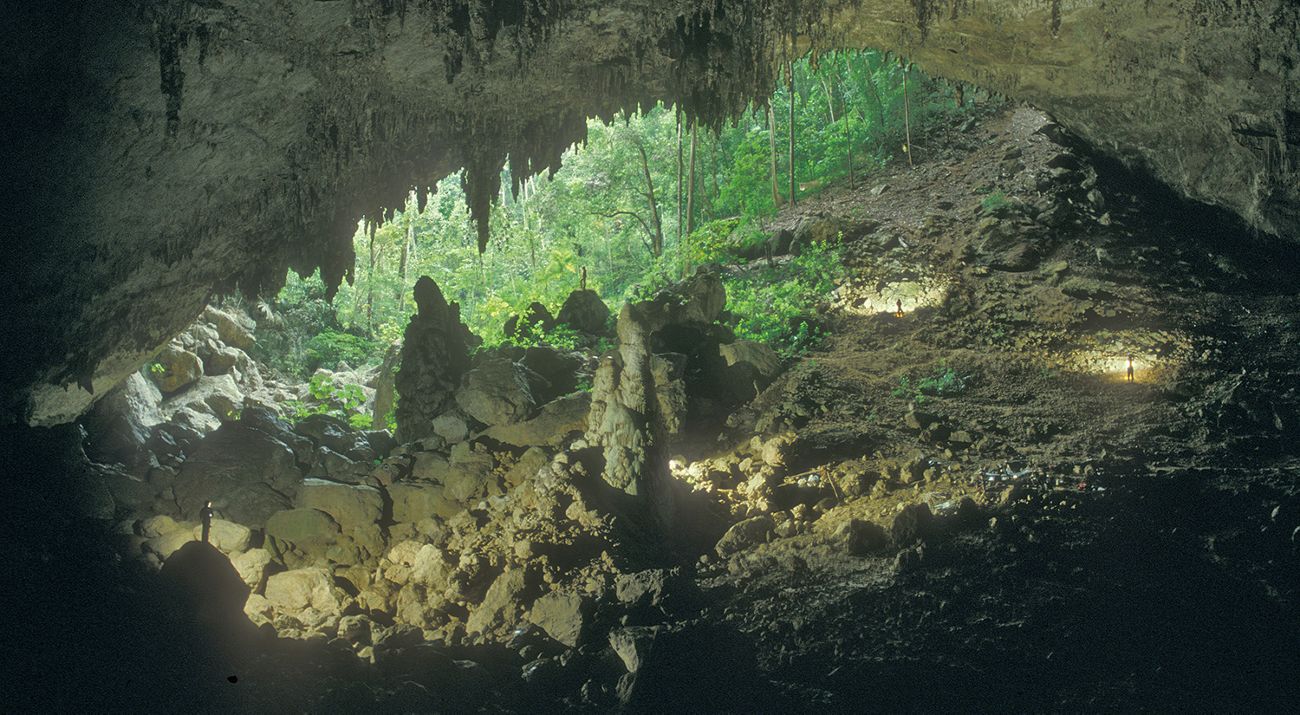Protecting an Underground Treasure
Chiquibul's formations: totem pole and fried egg stalagmites, cave pearls and rock chandeliers
By Christiana Ferris
The Chiquibul Cave System in western Belize is not an easy place to reach. Several hours on a rutted jungle road—and the occasional downed tree requiring a strong back and a chainsaw—clearly makes a visit to the caves not a journey for your average tourist. And so far, that’s been a good thing for the cave network’s delicate natural systems.
The cave network meanders below the surface in Chiquibul National Park, a 264,000-acre reserve in the Maya Mountain Massif region of Belize. The nearly 540,000-square-foot Chiquibul Cave System is the largest in Belize, the longest in Central America, and a treasure trove of geological and archaeological wonders.
A 2007 technical assessment of the area revealed that the cave system needed its own management plan – and the Chiquibul National Park officials turned to The Nature Conservancy for help. Conservancy staff from Belize and Tennessee spent a year putting together a five-year management plan for this incredible cave system.
A Unique Cave System
Chiquibul’s fancifully named geological formations—broomstick, totem pole and fried egg stalagmites; splattermites; cave popcorn; cave pearls; snottites; and rock “chandeliers”—conjure up images of Tolkien-esque creatures and sci-fi flicks from the 1950s.
But despite its remoteness, the area is threatened by agricultural activities, fires, illegal logging, wildlife hunting, looting of cultural artifacts, and vandalism of both cultural and geological assets.
Flowing underground through this huge cave system is the Chiquibul River, and the greater Chiquibul/Maya Mountains Massif Region forms the headwaters of the Belize River watershed. The country’s largest and most important watershed nourishes plants and animals and provides drinking water, hydropower, crop irrigation and recreational opportunities for roughly 100,000 Guatemalans and 130,000 Belizeans.
Why Tennessee?
When Chiquibul National Park officials turned to Conservancy staff in Belize for help with a management plan in 2008, the Belize staff turned to their colleagues in Tennessee. With America’s highest number of known caves—some 10,000—found in Tennessee, the Tennessee Chapter has made the preservation of cave ecosystems one of its highest priorities and directs the state’s leading cave protection program.
In 2009, Tennessee cave and karst system experts Alex Wyss and Cory Holliday traveled to Belize to visit the caves and participate in conservation planning workshops for Chiquibul. They joined forces with key staff from Belize’s Forest Department, Institute of Archaeology, Conservancy partner Friends for Conservation and Development, Belize Defense Force, the Belize Tourism Board and past cave researchers to outline strategies to protect this underground wonder.
Wyss and Holliday were impressed with the uniqueness of the Chiquibul cave system.
“Everything is on a much grander scale in Belize caves,” Wyss says. “The chambers are substantially bigger. And while there has been some limited use of Tennessee caves by Native Americans, by contrast, every cave in Belize has evidence of Maya use.
“But what really stood out is that we have so much in common and we really need to work together to protect these cave resources.”
The Final Results
With technical assistance from the Conservancy, financial assistance from the Tennessee chapter and more than a year of scientific research, data analysis and planning by the partners, a five-year management plan was presented in February 2010 to the Institute of Archaeology. It’s the first of its kind for the management and protection of caverns in Belize.
The plan identifies the threats facing the Chiquibul Cave System and lays out steps to mitigate those threats. It also addresses the training, administrative capacity and funding needed to maintain the cave as a world-class site of great cultural, archaeological, geological and biological importance. Finally, the plan includes specific recommendations related to research and monitoring, natural and cultural resource conservation, tourism and other public uses.
“We’re very excited about finally having a management plan in place for the cave system,” says FCD executive director Rafael Manzanero. “We started out as teenagers, conducting countless field expeditions into the area over the last fifteen years, and are honored to now be the day-to-day managers of this unique natural heritage.”
The plan also includes a provision to open a small portion of the cave to visitors on a very limited basis. Eco-Quest Expeditions, the tourism arm of FCD, will arrange guided visits by FCD rangers. FCD co-manages the cave system with the IA and also has a co-management agreement with Belize’s Forest Department for the larger Chiquibul National Park.
“Some people might ask why a management plan is needed,” Manzanero continues. “I have seen the impact on other caves and I don't want my name connected to the destruction of such a treasure. With this management plan, we have a clear roadmap on how best to use and manage it.”
“The management plan will help protect the cave's delicate formations from further degradation,” adds Natalie Rosado, the Conservancy’s Maya Forest manager in Belize. “The idea was to get ahead of the curve by having a plan in place to anticipate these threats and also be prepared for the time when the cave system may be proposed as a new World Heritage site.”
